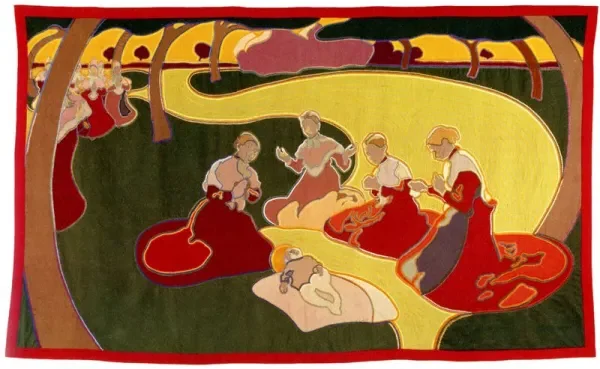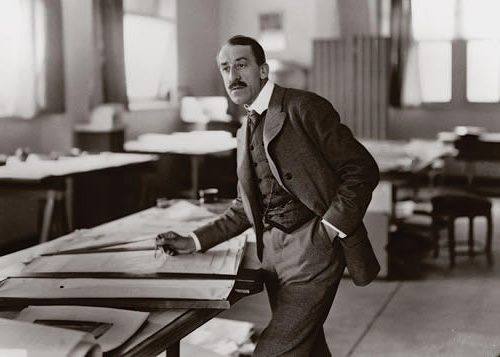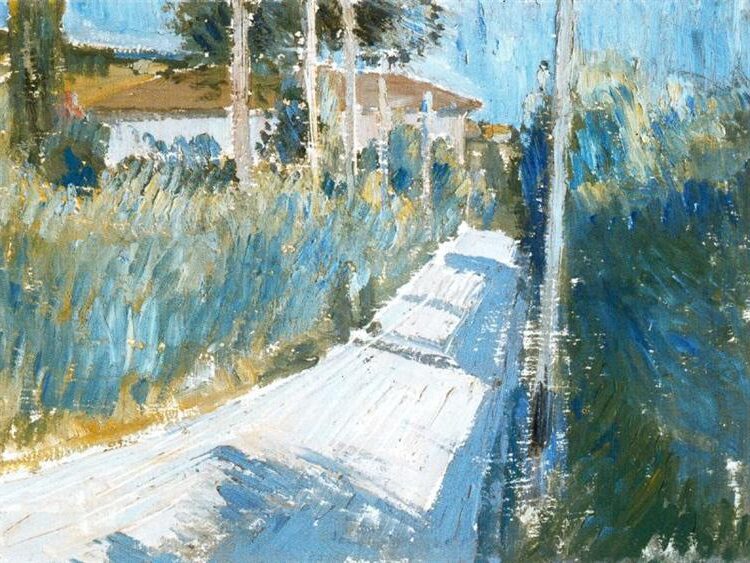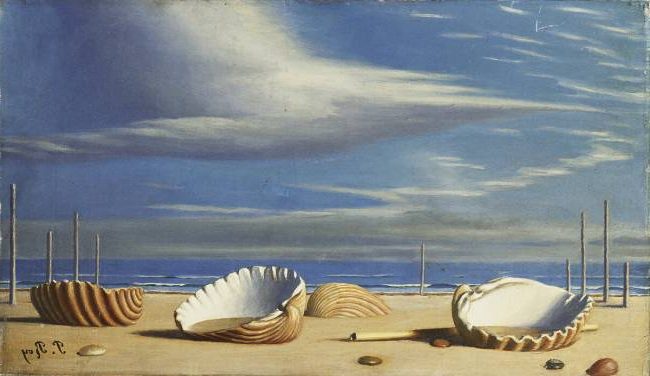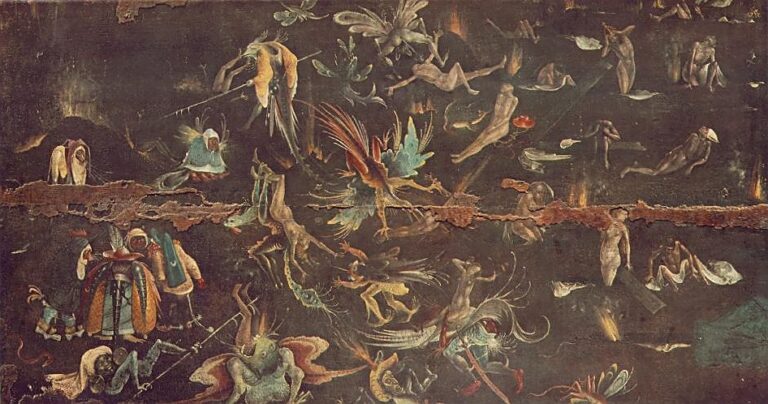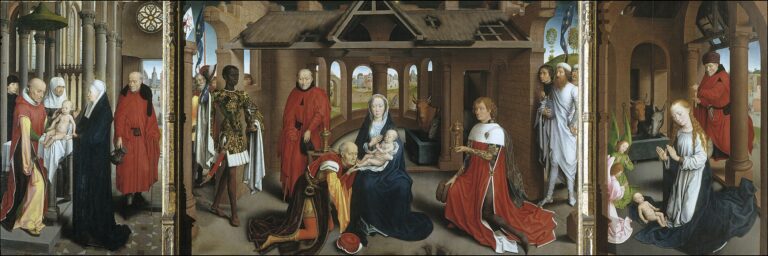Henry van de Velde: Painter and Pioneer of Art Nouveau
Born: 3 April 1863, Antwerp, Belgium
Death: 15 October 1957, Zürich, Switzerland
Art Movement: Art Nouveau, Neo-Impressionism
Nationality: Belgian
Influenced By: Paul Signac and Georges Seurat
Institution: Royal Academy of Fine Arts, Antwerp
Henry van de Velde: Painter and Pioneer of Art Nouveau
Life and Career of Henry van de Velde
Henry van de Velde was a versatile Belgian artist. He made significant contributions to painting, architecture, and design. He played a key role in developing the Art Nouveau style and had a lasting impact across Europe.
Early Life and Education
Henry van de Velde was born on April 3, 1863, in Antwerp, Belgium. He initially wanted to be a composer but chose to pursue painting instead.

Garden in Kalmthout (1892) by Henry van de Velde
Van de Velde studied at the Royal Academy of Fine Arts in Antwerp from 1880 to 1883. His teachers included Charles Verlat, a well-known Belgian painter.
After his time in Antwerp, van de Velde went to Paris. There, he studied at the studio of Carolus-Duran from 1884 to 1885. This experience exposed him to new artistic ideas and techniques.
Artistic Evolution and Contribution to Art Nouveau
Van de Velde started his career as a painter. He was influenced by Neo-Impressionism and worked with artists like Paul Signac.
In the early 1890s, he became part of Les XX, an important group of Belgian avant-garde artists.
His style evolved, and he began to focus more on decorative arts. Van de Velde became a key figure in the Art Nouveau movement in Belgium.
He designed his own home, Bloemenwerf, in 1895. This project showcased his new ideas about integrating art into everyday life.
Along with Victor Horta and Paul Hankar, van de Velde helped establish Art Nouveau as a major style in Belgium. His work combined flowing lines with functional design.
Transition to Architecture and Design
In the late 1890s, van de Velde shifted his focus to architecture and design. He created furniture and interiors for art galleries in Paris. This work helped spread the Art Nouveau style beyond Belgium.

Winter Sun (1892) by Henry van de Velde
Van de Velde’s reputation grew, and he received commissions across Europe. He worked in Berlin and other German cities.
In 1902, he moved to Weimar, where he founded the School of Arts and Crafts. This school later became part of the famous Bauhaus.
His designs included buildings, furniture, and even household items. Van de Velde’s work blended art with practical function. He continued to work and teach in various European countries until his death in 1957.
Influence and Collaborations
Henry van de Velde’s work and ideas had a big impact on art and design in Europe. He worked with many other artists and helped shape new art movements.
Connection with Contemporary Artists
Van de Velde knew many famous artists of his time. He was friends with Vincent van Gogh and admired his bold use of color.
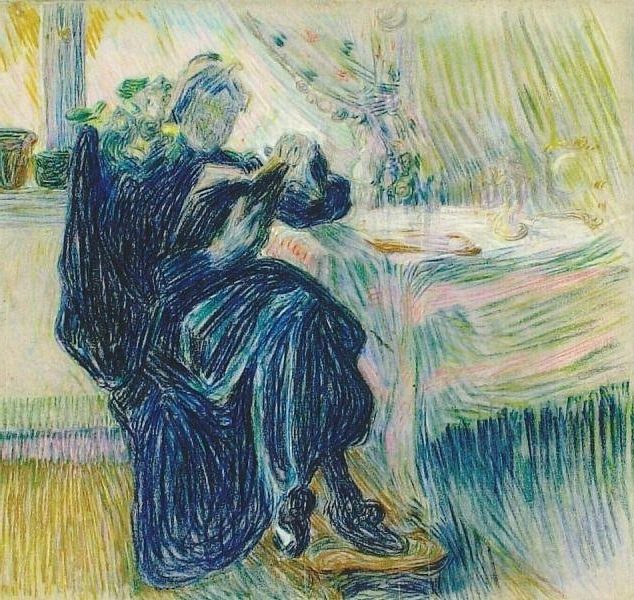
Girl Mending (1890) by Henry van de Velde
Van de Velde also worked closely with Neo-Impressionist painters like Georges Seurat and Theo van Rysselberghe. Their style influenced his early paintings.
In Belgium, Van de Velde teamed up with Victor Horta, a key figure in Art Nouveau architecture. They shared ideas about merging art and everyday life.
Van de Velde also collaborated with sculptor Constantin Meunier on projects like the Ernst Abbe Memorial in Jena, Germany.
Engagement with Art Movements
Van de Velde played a big role in spreading Art Nouveau across Europe. He designed items for Samuel Bing’s famous Art Nouveau gallery in Paris. This helped make the style popular.
He was inspired by William Morris and the British Arts and Crafts Movement. Like Morris, Van de Velde wanted to make beautiful, useful objects for everyone.
He took these ideas to Germany, where he became a leader in the Jugendstil movement.
His work bridged different styles:
- Art Nouveau curves
- Arts and Crafts simplicity
- Early modernist geometry
Contributions to Educational Reforms in Art and Design
Van de Velde made big changes to art education. In 1902, he moved to Weimar, Germany at the request of Grand Duke Wilhelm Ernst. There, he set up a new arts and crafts school.
His school taught a mix of fine arts and practical skills. Students learned painting, sculpture, and design. They also studied crafts like metalwork and furniture-making. This approach was new and influential.
Van de Velde’s ideas about teaching art and design were important. They helped shape the famous Bauhaus school that came later. His focus on linking art, craft, and industry was ahead of its time.
Legacy and Impact on Future Generations
Henry van de Velde’s influence extended far beyond his lifetime, shaping modern design and architecture. His ideas and work left a lasting mark on art schools, museums, and architectural styles across Europe.
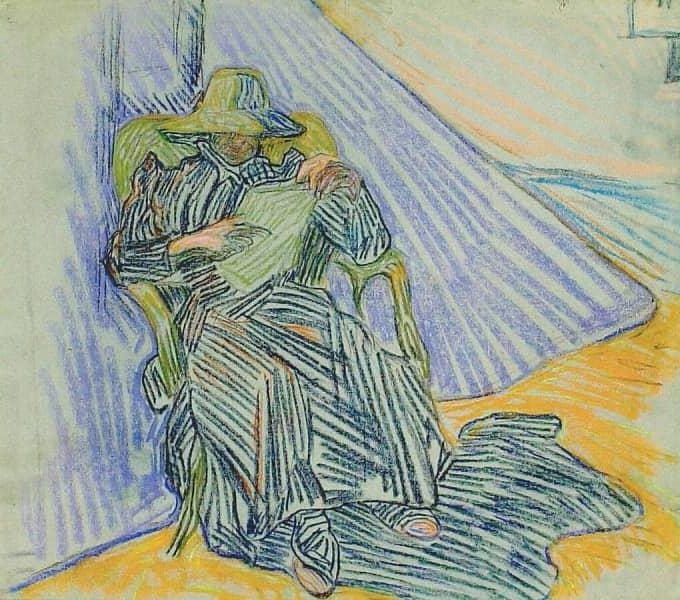
Woman Reading in the Sun (Jeanne Biart) (Lezende Vrouw in de Zon)
The Bauhaus Connection
Van de Velde played a key role in the birth of the Bauhaus. He founded the Grand-Ducal School of Arts and Crafts in Weimar, Germany, which later became the Bauhaus under Walter Gropius. Van de Velde’s focus on merging art with function laid the groundwork for the Bauhaus philosophy.
His ideas on simplicity and functionality in design inspired many Bauhaus teachers and students. This influence can be seen in the clean lines and practical approach of Bauhaus designs.
Preservation and Celebration of His Work
Museums across Europe have worked to preserve and showcase Van de Velde’s creations. The Folkwang Museum in Germany and the Kröller-Müller Museum in the Netherlands house significant collections of his work.
The Karl Ernst Osthaus-Museum has dedicated exhibits to Van de Velde’s designs. In Belgium, the University of Ghent’s Boekentoren stands as a lasting example of his architectural vision.
Museums and art schools continue to study and teach Van de Velde’s design principles. This ongoing interest helps keep his legacy alive for new generations of artists and designers.
Influence on Modern Architecture and Design
Van de Velde’s impact on modern architecture is clear in buildings like Villa Esche in Germany and Villa Leuring in the Netherlands. These structures showcase his blend of Art Nouveau curves with more streamlined forms.
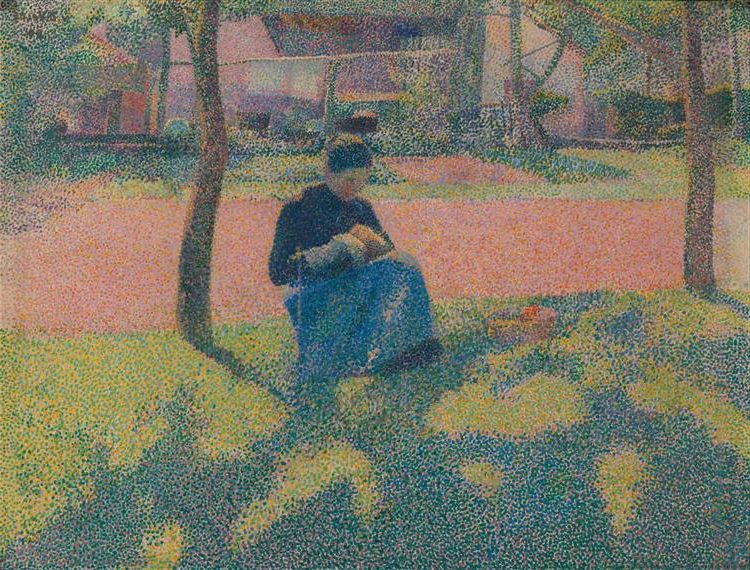
Garden in Kalmthout (1892) by Henry van de Velde
His ideas on integrating form and function paved the way for modern architecture. Architects like Victor Bourgeois in Belgium drew inspiration from Van de Velde’s work.
Van de Velde’s furniture designs, with their flowing lines and practical use, influenced later designers. His push for simple, functional objects helped shape the path of 20th-century design.
Frequently Asked Questions
Henry van de Velde was a key figure in Art Nouveau and modern design. His work spanned painting, architecture, and interior design. Van de Velde’s ideas shaped the development of 20th century art and design movements.
What contributions did Henry van de Velde make to the Art Nouveau movement?
Van de Velde helped define the Art Nouveau style through his designs. He created curved, organic forms in furniture and interiors. His work featured flowing lines and nature-inspired motifs.
Van de Velde promoted the idea of a “total work of art.” This meant designing all elements of a space to work together as one unified whole.
How did Henry van de Velde influence the development of Art Deco?
Van de Velde’s later work moved toward more geometric forms. This shift helped pave the way for Art Deco. His use of abstract patterns and simpler shapes was an early step toward Art Deco style.
He also emphasized the use of new materials like steel and glass. This focus on modern materials became central to Art Deco design.
What are some of Henry van de Velde’s most celebrated works?
The Bloemenwerf house in Brussels is one of Van de Velde’s best-known designs. He created this home and studio for himself in 1895. It showcased his Art Nouveau style.
The Folkwang Museum in Hagen, Germany is another famous project. Van de Velde designed this art museum in 1902. It was one of the first modern museum buildings.
His furniture designs, like the “Secessionist” chair from 1898, are still admired today. These pieces show his skill in merging function and artistic form.
Can you describe Henry van de Velde’s impact on modern design?
Van de Velde believed in uniting art and industry. This idea became a key principle of modernist design. He promoted the use of machine-made objects in everyday life.
His work helped bridge the gap between Art Nouveau and modernism. Van de Velde’s later designs moved toward simpler, more functional forms. This shift influenced the Bauhaus school and other modernist movements.
What is the historical significance of the Van de Velde company in the context of design?
The Van de Velde company was founded to produce and sell Henry van de Velde’s designs. It played a key role in spreading his ideas and style.
The company made furniture, textiles, and household objects. These products brought Van de Velde’s artistic vision to a wider audience. They helped establish his reputation as a leading designer.
How has the legacy of Henry van de Velde been preserved in modern times?
Many museums display Van de Velde’s work. The Museum of Modern Art in New York has several of his pieces in its collection.
His buildings, like the Bauhaus University in Weimar, are protected as historic sites. These structures serve as physical reminders of his architectural achievements.
Design schools still teach Van de Velde’s principles. His ideas about integrating art and function continue to influence modern designers.

